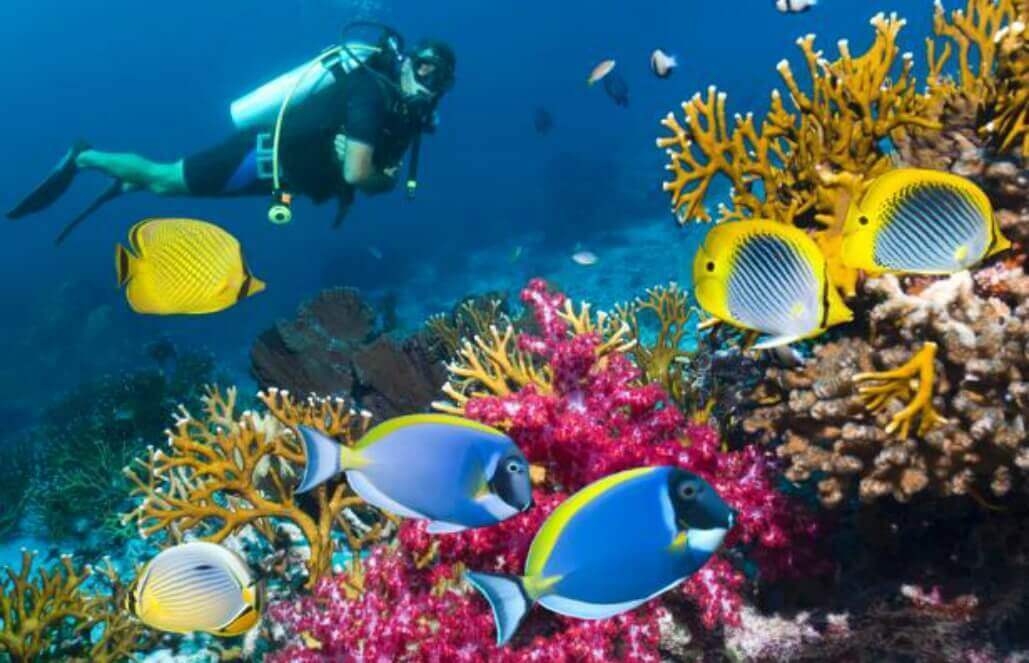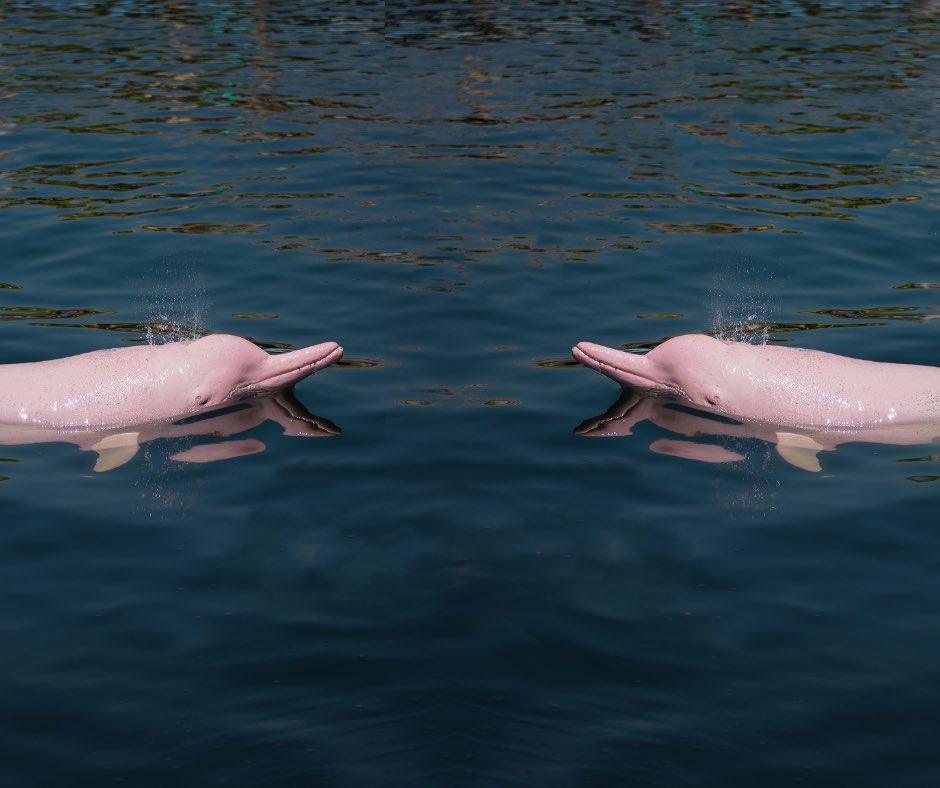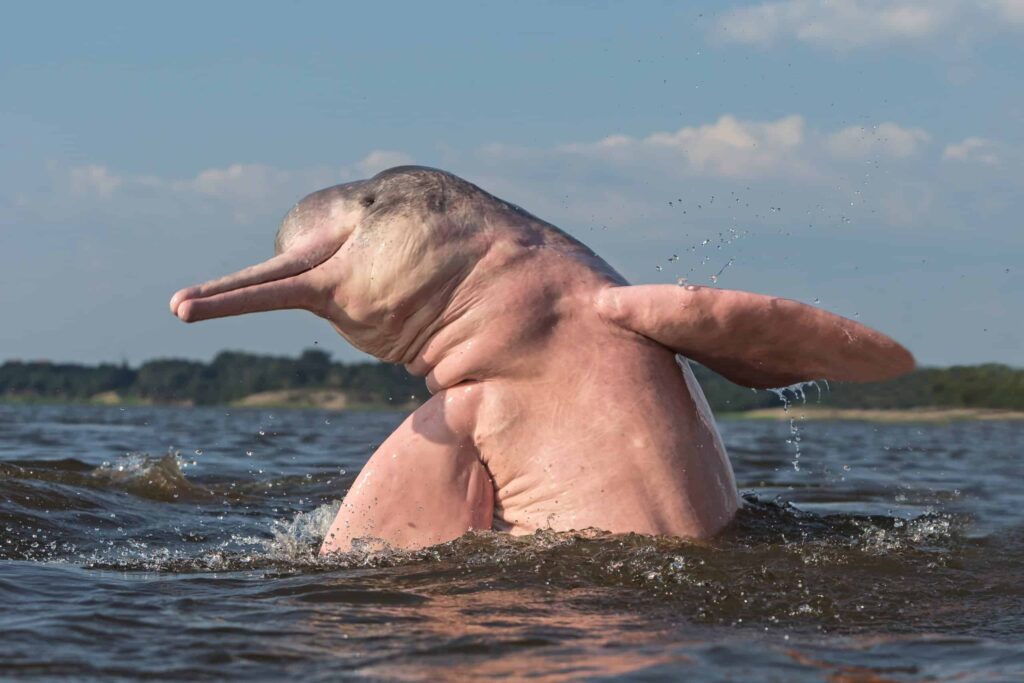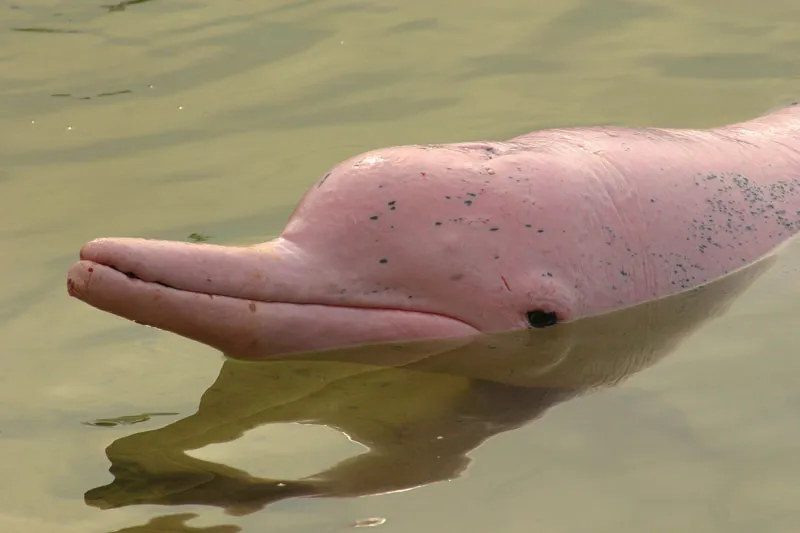Scientists are utilizing AI technology to monitor endangered pink dolphins through acoustic eavesdropping.
New acoustic tracking technology may be used to support conservation initiatives in the Amazon and other areas. Scientists have utilized AI to track the behaviour of two endangered dolphin species (Pink Dolphins) in the Amazon River. They trained a neural network to identify the dolphins’ distinct clicks and whistles.
On July 27th, Scientific Reports published research that may improve conservation efforts for dolphins. By using sound to track the dolphins’ movements across a large area of rainforest that becomes submerged after the rainy season, researchers can create a more accurate picture of their behaviour. This method is less invasive than traditional tracking methods like GPS tags, boats, or aerial drones. “Sound is probably the only sense that we know of that we all share on Earth” Says co-author Michel André, a bioacoustician at the Technical University of Catalonia in Barcelona, Spain.
André and his colleagues aimed to study the movements of two species, namely the boto (Inia geoffrensis), which is also referred to as the pink river dolphin, and the tucuxi (Sotalia fluviatilis), within the floodplains of the Mamirauá reserve located in northern Brazil. To achieve this, the team installed underwater microphones at various locations to monitor the animals’ activities.
Scientists have utilized AI technology to separate the sounds of dolphins from the noisy background of the Amazon. The recordings were fed into a deep-learning neural network that can categorize sounds in real-time, similar to how the human brain processes information. This technology has enabled researchers to analyze vast amounts of data that would have been nearly impossible to accomplish otherwise. Federico Mosquera-Guerra, who studies Amazonian dolphins at the National University of Colombia in Bogotá, attests to the usefulness of this method.

The researchers trained an AI to recognize three specific sounds: dolphin calls, rainfall, and boat engines. Dolphins use echolocation clicks to navigate and communicate with each other through whistling. By detecting these clicks and whistles, the AI was able to track the movements of these animals. Additionally, the AI was able to distinguish between the two distinct dolphin species, Botos and Tucuxis, based on their unique whistles.
Efforts towards conservation.

This study is a collaboration between the Technical University of Catalonia and the Mamirauá Institute of Sustainable Development in Tefé, Brazil. Its purpose is to utilize technology for monitoring the biodiversity of the Amazon and identifying potential threats to it.
It is unfortunate that both species of dolphins are currently endangered. Reports indicate that the Boto population is declining by 50% every ten years, while the Tucuxi population drops every nine years. Researchers believe that monitoring the animals’ movements and habitats can help save their populations. Moreover, this can help Indigenous communities coexist with dolphins, which can sometimes disrupt fisheries.
Conservationists can make informed decisions to protect the wildlife of the Amazon region by collecting important information and deploying the system over a wider area. This same approach can also be used in the ocean. André’s previous work using this system has demonstrated the effects of human-made noise pollution on sperm whales and has led to the development of a warning system for ships to avoid harming these animals.
Write with us✍?
TeamUgtWorld warmly welcomes everyone! If you have something on your mind that you’d like to write about, we invite you to publish your content on our platform @Ugtworld. To learn more, please click on the link provided below.





